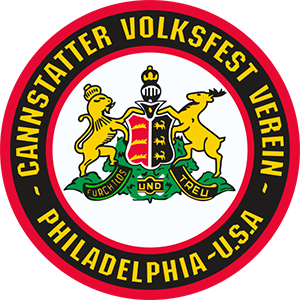About Us
Our History
One of the oldest and largest of the German-American clubs in Philadelphia, the Cannstatter Volksfest-Verein was founded in 1873 for the purpose of celebrating the customs and traditions of their homeland, especially the annual harvest festival held in the town of Bad Cannstatt. In addition, they hoped to use any income from the organization for charitable purposes. More than 150 years since that founding, all of the club’s purposes have been impressively maintained.
The annual Fest held on Labor Day weekend draws thousands of people, both German-Americans and others, to observe and participate in this colorful, ethnic event. The club also continues its charitable tradition providing support for German language schools, hospitals, nursing homes, and orphanages, as well as to specific individuals in need.
Like many of the German-American Clubs, the Cannstatter originally drew members from a specific section of Germany, in this case, the area of Southwestern Germany, generally known as Schwabenland, Represented today by the political subdivision, Baden-Württemberg. The Swabian, or Schwabs, as they are usually called in their distinctive regional dialect, are proud of their Heimat and a modified form of the Württemberg Coat-of-Arms appears on the club banner. They also take pride in the accomplishments of their Landsleuete (compatriots) in America, such as Godfrey Keebler and Christian Schmidt, two founders of this club who also are nationally known entrepreneurs. Whenever any German-American events are taking place, you will always find the Cannstatter supporting it, both financially and with volunteer workers – living proof of their club motto, Furchtlos und Treu (Fearless and True).
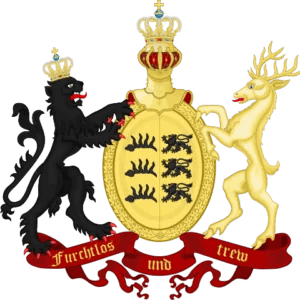
Württemberg Coat-of-Arms
Strange as it may seem the history of our Cannstatter did not begin in America. The home and birthplace of the original Cannstatter Volksfest are the so-called “Cannstatter Wasen” an extensive grassy plain, adjoining the ancient city of Bad Cannstatt in the old Swabian country, the kingdom of Wurttemberg. This ground was often used for military drills by the royal residence of Stuttgart.
In 1816 the food crop almost totally failed. The result of this failure brought great suffering to the populace for a two year period. King Wilhelm 1st did all in his power to help the people get relief. The King’s first endeavor was to try to improve animal husbandry. To do this he instituted an annual festival… This is similar to what we would now call a state fair. The first one was held on September 28, 1818. This event is carried on to this very time on the last three days of September.
It is this event that our modern Volksfest is modeled after. Picture if you will, the way it was 150+ years ago, in the United States. Congress had just established the Postal System. The United States went on the Gold Standard. A new process was discovered that would also wood pulp to be turned into paper. Jesse James died and Susan B. Anthony was fined $100 for trying to vote. Alexander Graham Bell would not invent the telephone for another three years. Thomas Edison would not invent the phonograph for another four years.
It was in 1873 that the Cannstatter Volksfest Verein came into being. As we look back we can see in our mind's eye, a group of native Germans, living in a new land for only a short time, longing for home and the traditions of their youth. These people desired to preserve their traditions and to create a society within a society that would best fulfill their needs. So it was, that a group of men, with great vision, came together to form the organization which we now call the Cannstatter Volksfest Verein.
This group of men met on September 24th at the residence of Louis Hartmann, at 257 North Fifth St. This residence was also a wine saloon. The sole purpose of this meeting was to institute all things necessary to have their first festival, in the tradition of the Cannstatt area that they left. The festival took place only four days later on September 28th at Reistle’s Singerpark. Mr. Reistle was a participant at the first meeting and volunteered his ground for the festival. The Singerpark was in the Schuylkill Falls area of the city.
We can see what was important to these men. They instituted only three committees; Entertainment, Refreshments (Drinks), and Meals.
The first fest was a great success. It encouraged the men to form a committee of seven men to organize a society. Those men were John Bower, C.M. Baumann, Christian Schmidt, Godfrey Keebler, Fritz Klein, Charles Berlinger, and Henry Jahke.
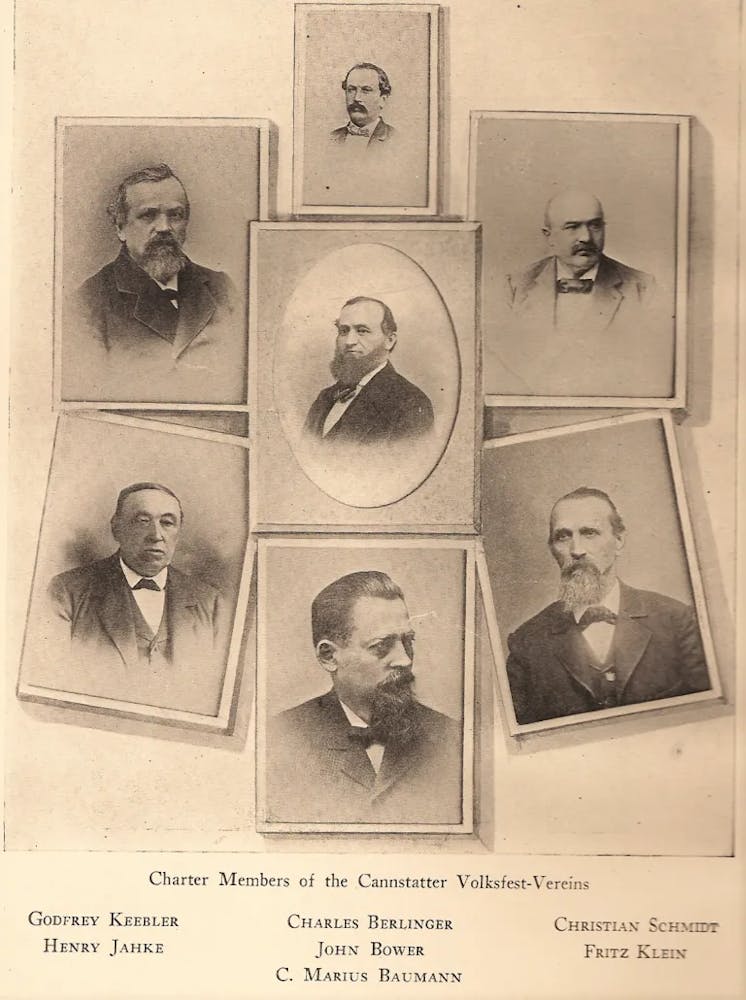
They drew up a constitution and by-laws based on 4 points. Continuation of the festival, promoting good fellowship among members, and relieving poverty. By the second festival, the Cannstatter Volksfest Verein had accrued 130 members. It was also in 1874 that the Cannstatter started their long tradition of charitable giving. From the festival, they netted $2,000. From this amount, they gave $250 to the German Hospital and another $250 to the Masonic Humboldt-Verein. This tradition of charitable giving has never been interrupted, even in the darkest days of the Verein, when there were no profits and sometimes large losses.
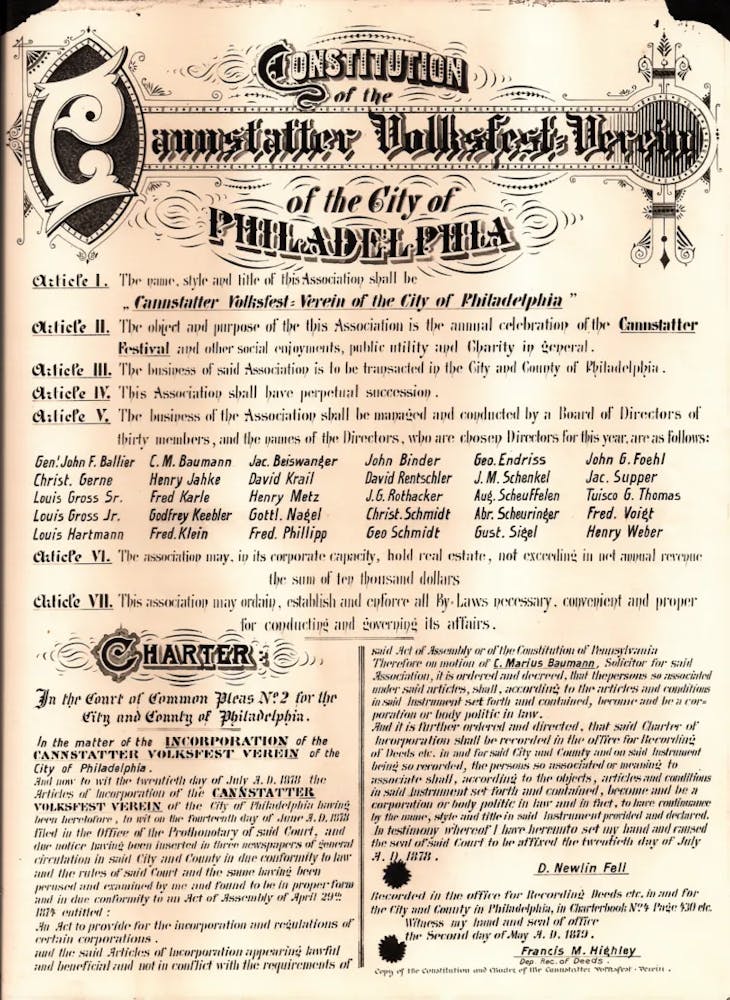
Cannstatter Constitution circa 1879
In subsequent years the Verein also sponsored gala balls and other forms of entertainment such as humorous plays, similar to what we now call Carnival and even stage dramas. It was during the ball of 1875 that the Cannstatter’s first president, John Bower died of a heart attack on the dance floor. For the next ten years, these balls and presentations flourished. Many of them were held at the Academy of Music, until 1884, when the Academy became inadequate. At that time Horticultural Hall, next to the Academy was rented. By this time club membership had swelled to 1,360.
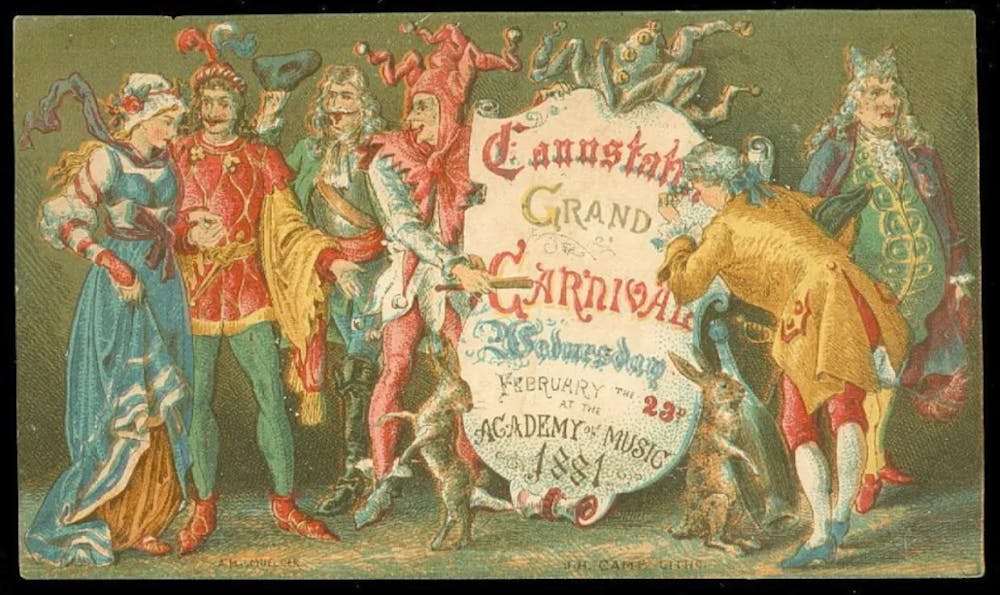
Postcard from 1881 Cannstatter Carnival at the Philadelphia Academy of Music.
In 1883 the Cannstatters purchased a large number of gravesites in Greenmount Cemetery. These were to be given to the poor who could not afford personal internment. Eventually, over 150 gravesites were donated by the Cannstatters to indigent people. The remainder of our gravesites were donated to the city of Philadelphia in 1996.
After fifteen years of uninterrupted success, the lean years began in 1888. A new law concerning alcoholic beverages was enacted. The “High License Law” dictated that organizations such as the Cannstatters had to get a permit to use meeting grounds for activates such as our Folksfest. This permit had to be obtained from a judge. Opposition from surrounding neighbors, who thought that such festivals were a nuisance, made it impossible to get a permit.
To circumvent this legal problem, the Cannstatters took their show on the road. In 1889 the festival was held in Camden’s Schutzen-Park. The festival would remain in Camden until 1894 when it was finally returned to Philadelphia, where a license was obtained for Washington Park at 26th and Allegheny Avenue. The return home was a brilliant success, but by this time we had lost 65% of our membership and now had only 540 members.
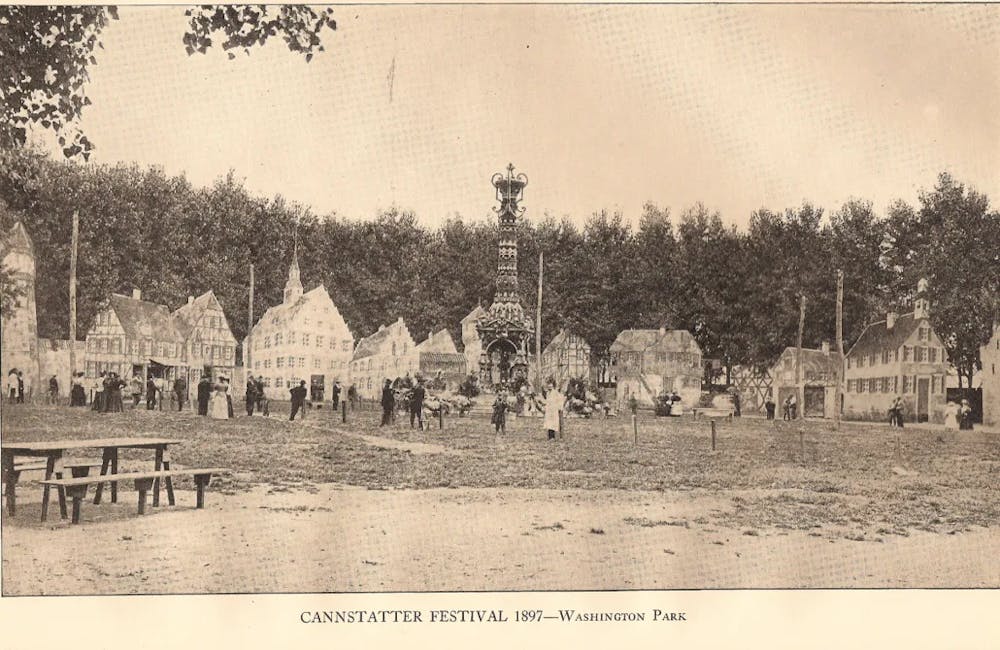
One sad note from 1894 was the death of Christian Schmidt, our Treasurer. But, Mr. Schmidt would soon be followed by another famous personage. Albert Schoenhut of the famous toy-making family was elected President in 1897. It was also in 1897 that a statue of our great countryman and poet Freidrich Von Schiller was donated to the city and placed in Fairmount Park. A statue of Goethe was soon to follow.
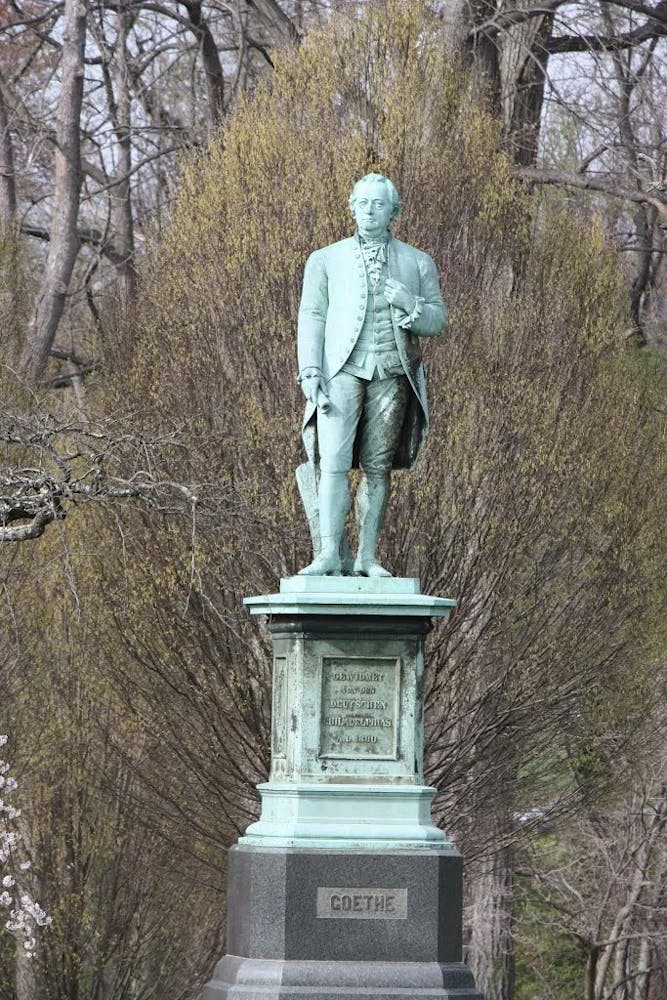
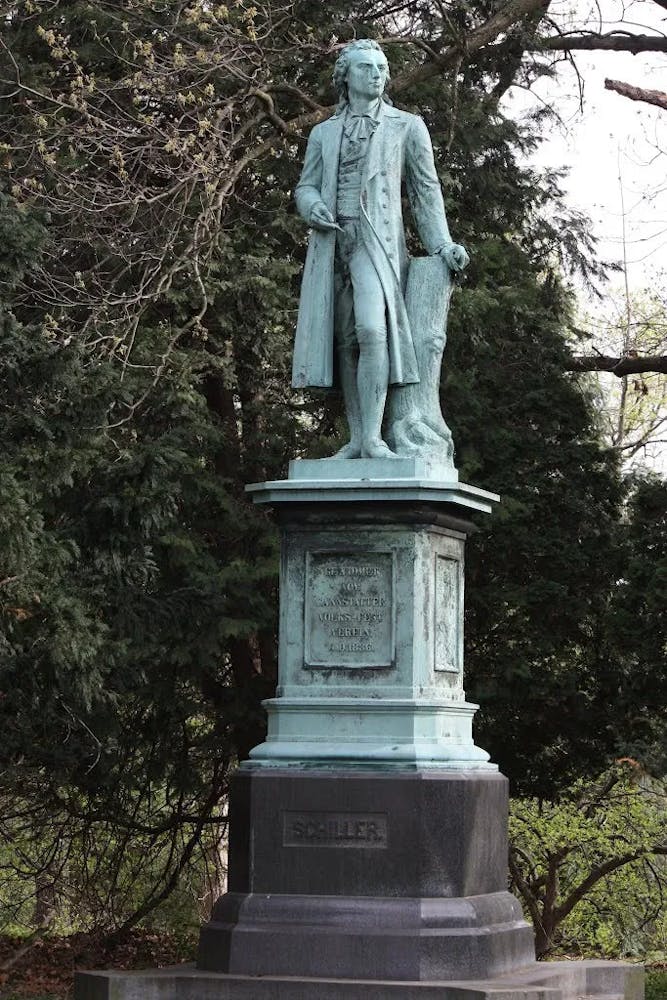
Goethe and Schiller statues still exist in Fairmont Park, Philadelphia, PA
Membership was slowly returning. By the year 1901, it was decided that the Cannstatter should have a clubhouse of its own. A property was acquired at 542 North Fourth Street for $8,500. It was described as “convenient for all members, very roomy, solidly built and in the best of condition.” Our membership shot back up to 936. It is interesting to note that approval for this purchase was made at General Balliers Saloon at Fourth and Fairmount. So you can see that Philadelphia was still a compact city.
1904 lists the first of four international charitable donations when we sent 1,000 marks to Ilsfeld, Wurttemberg, a city that suffered a very destructive fire. We followed this up in 1906 by sending $540 to San Francisco to help earthquake victims. Things continued to go well for the Cannstatter and in 1912 we purchased the old Mannerchor home at 1637 North Broad Street for our new clubhouse for $20,000. Our old clubhouse on Fifth Street was sold and became Integrity Bank. Broad Street needed work and although we occupied it in August, the building was not dedicated until November 3rd. The club membership was climbing again, it was now up to 1,120.
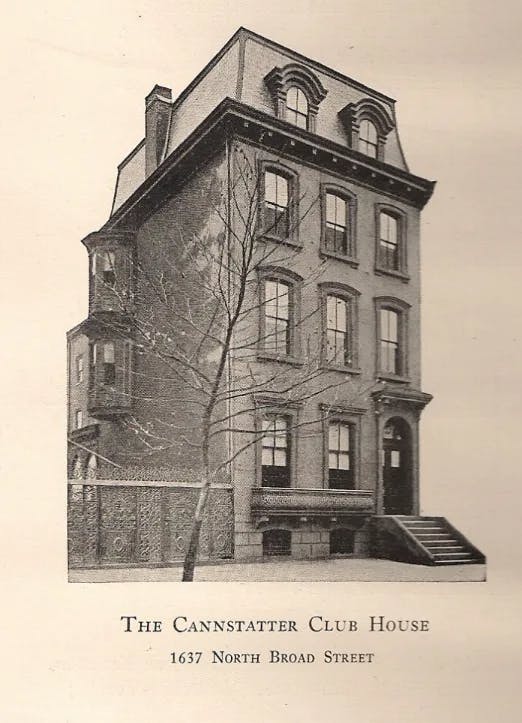
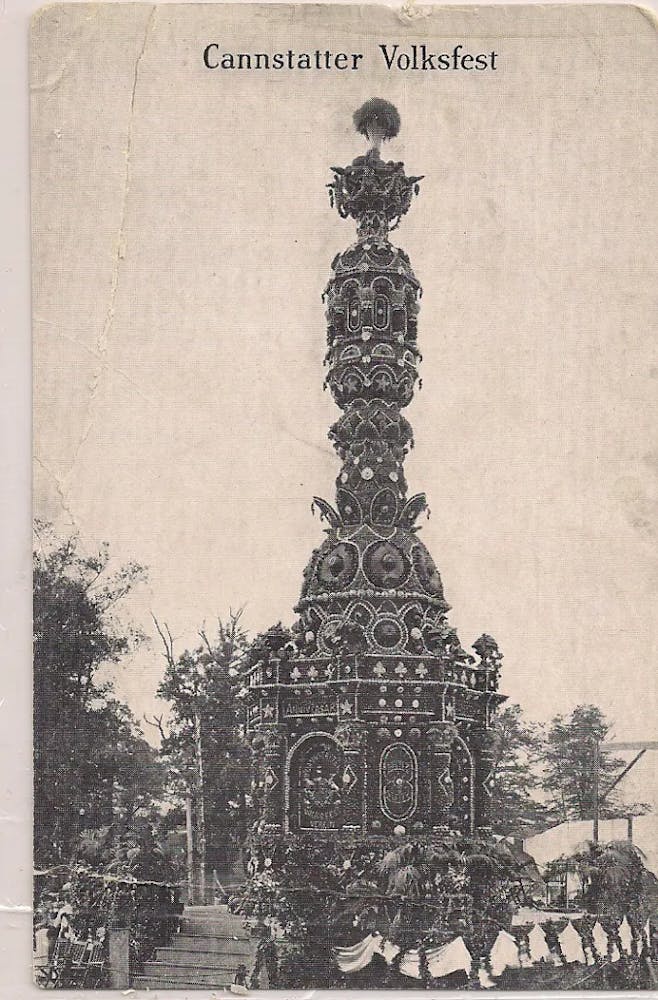
Things went well until 1917 when the United States declared war on Germany. It became impossible to hold a festival that year because no one was willing to rent their park to the Cannstatter. No festivals could be held during the war years. Post-war – in 1920 a small family type festival was held at Schutzen Park at 83rd & Tinicum. There were no repercussions and it was felt that proof had been given that a festival could be held without damaging the park’s reputation. In 1922 the festival was moved to the Rifle Club at 8th and Tabor Road. Things began to prosper again and by the 50th Anniversary in 1923, the club’s assets including building for the first time exceeded $100,000. Part of this was because the building we had purchased on Broad Street for $20,000 was reassessed for $39,000.
The years between 1923 and 1946 are a bit of a mystery, as we do not have much documentation. We know that the club continued to mature and prosper. Although there were some difficulties and financial hard times during World War II, it was generally felt that the resentment during this time was nothing like what was endured during World War I.
After World War II the boys began to return from their tour of duty in the armed services. New life was infused into the Cannstatter. Membership swelled to well over two thousand. The Board of Directors began to think that it would be a great advantage to have a property of our own that was large enough to handle the festival. The Board empowered its officers to begin a search for such a property. The search came to a successful culmination when the Board voted to purchase that piece of property that bordered on the corners of Frankford Avenue and Academy Road in northeast Philadelphia.
On April 16th, 1947 that property was purchased from Waldo L. Eppers, of Philadelphia for $30,500. The land encompassed approximately 10 acres. The building which was on the grounds was in quite a bit of disrepair. But we knew that the home had formerly been owned by Senator Potter in the 1850s and we were sure that some good features could be restored. When we completed our restoration, we were amply rewarded. Two marvelous sections of the old mansion were saved. They were the magnificent entranceway, stairs and balcony, and the beautiful Baurenstuben room. Today these areas act as beautiful reminders of a gentile past. A further historic note is that Senator Potter’s wife was the sister of James Buchanan, our fifteenth President. President Buchanan would often spend his vacations at the property that now houses the Cannstatter Volksfest Verein.

Current Cannstatter clubhouse circa 1948
Within a year, our Board of Directors decided to sell off the frontage on Frankford Avenue for $12,500.
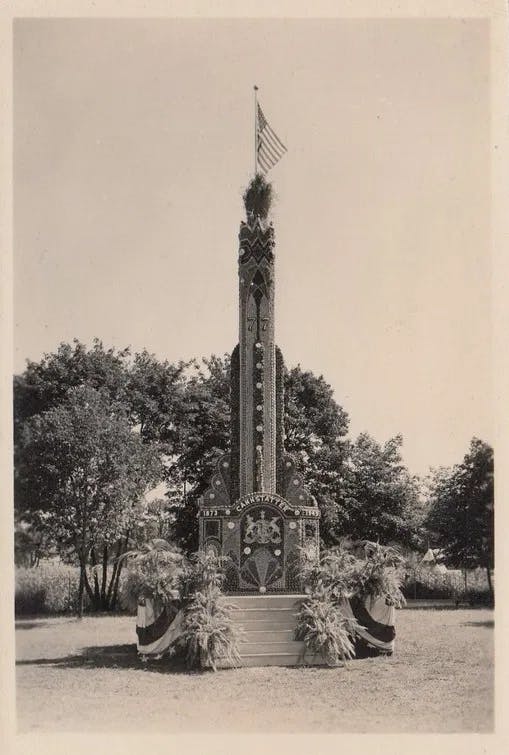
1949 Fruit Column on our new Volksfest grounds
The new location brought rave reviews and many new members. Almost immediately, work began on a large ballroom. This is the room that we refurbished in 1998 and we now know as the Crystal Ballroom. We can now seat 600 people in the Crystal Ballroom. The area around our new property was growing quickly in population. This, along with the fact that everyone loved our new facility, welled the membership. It was not long before our membership rolls exceeded four thousand people. Our leadership had enough foresight to realize the intersection of Frankford and the Academy would become a source of major auto traffic congestion. To minimize this problem, the Cannstatter joined forces with the City of Philadelphia. The Cannstatter donated to the City certain frontage property on Academy Road. In return, a City Council ordinance was passed which allowed the City Department of Highways to construct a pass-through on Academy Road that allowed our members to enter and exit the club safely.
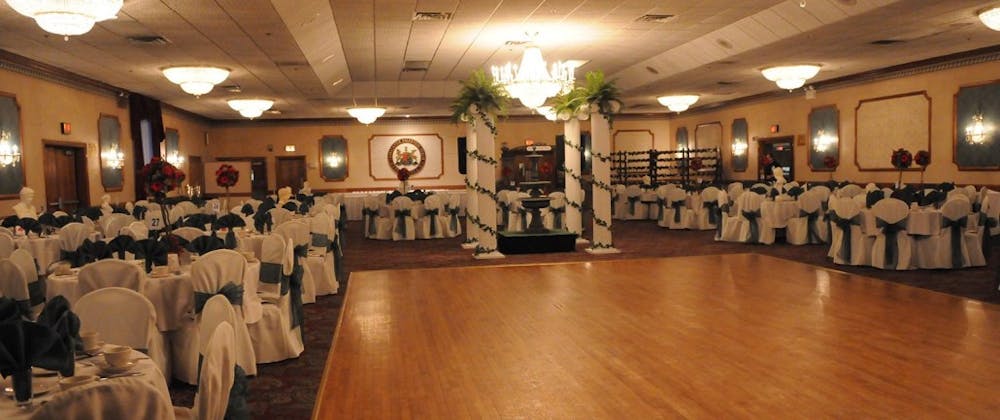
Crystal ballroom circa 2016
The widening of Academy Road went hand in hand with the construction of an Academy Road connection to Interstate 95.
Membership continued to flourish as the post-war immigrants flocked to the Club, seeking familiarity with old-world customs. It was not long, however, before this favorable situation began to fade. As conditions in Germany improved, the once plentiful immigration slowed to a trickle and then came to a virtual halt. As more forms of entertainment became available to the public, the popularity of all Clubs diminished. With this in mind, many changes were made in the building design to accommodate catering activities in the 1970s. Entering the mainstream of American business through our catering services greatly improved our profitability. This in turn allowed us to support our traditional customs, such as the fruit column, and continue to grow our charitable contributions.
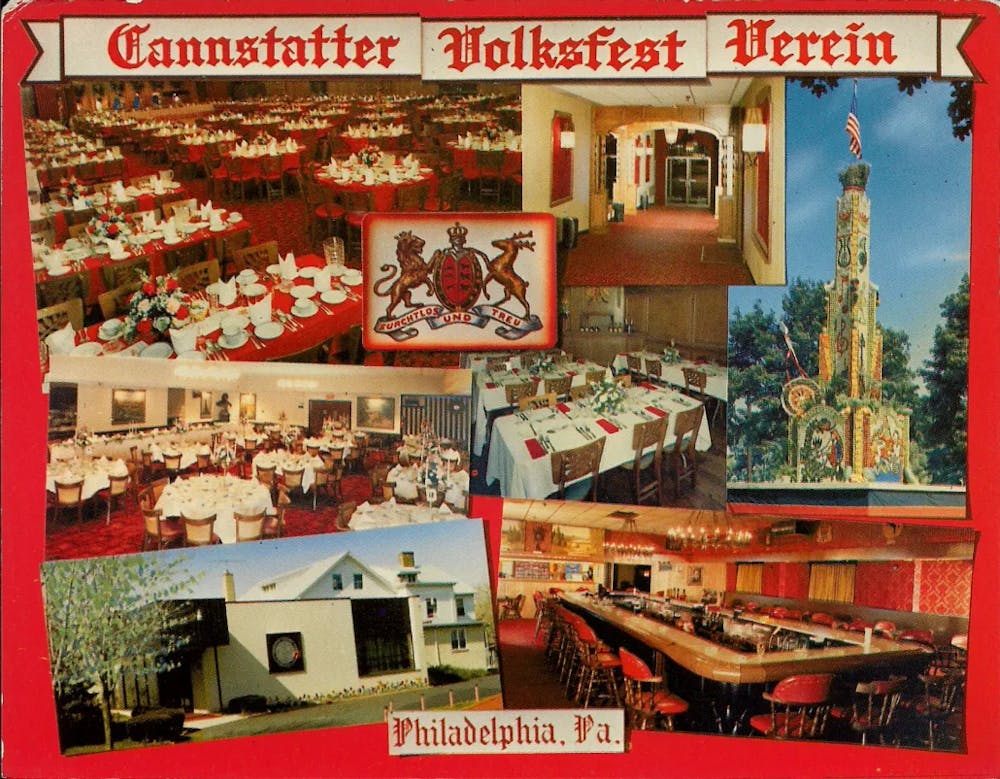
Postcard circa 1970
In April of 1997, the general membership unanimously approved the revision of the Cannstatter’s constitution. This was the first rewriting of the document since 1908. Our new Constitution brought us totally into the new world by allowing women to become full members for the first time.
Here are a few Anniversary Books from our past:
